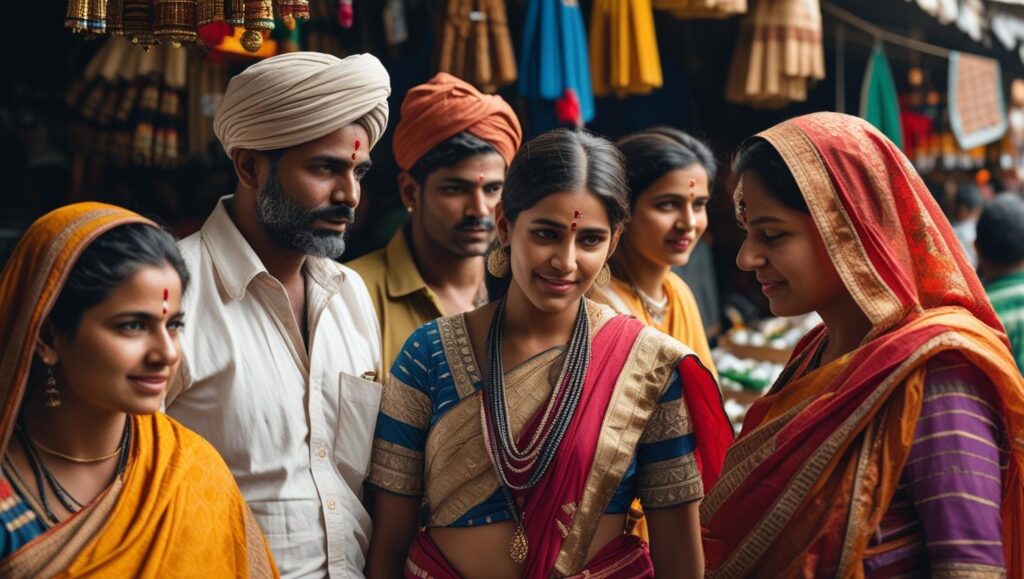Physical Address
18 C Ibbani Harohalli Village
Yelahanka Bengaluru 560064
Physical Address
18 C Ibbani Harohalli Village
Yelahanka Bengaluru 560064

Mumbra, Maharashtra — On a humid June afternoon, 32-year-old Meena Pawar steps out of her home clutching a tattered schoolbag that once belonged to her grandmother. “She never got to go to school,” Meena says softly. “I walk these same roads so I don’t have to.” Meena is a member of a Scheduled Caste communities that, for centuries, were branded “untouchable.” Her story echoes millions of others across India, where birth still often dictates opportunity.
The idea of dividing people by “varna” Brahmin, Kshatriya, Vaishya, Shudra first surfaced in ancient texts like the Manusmriti. Over time, these four broad categories splintered into thousands of jatis, or sub-castes; your jati could determine everything from whom you marry to which wells you’re allowed to draw water from.
“My grandfather was a cobbler,” Meena explains, “and because of that, I was told no school teacher would sit beside me.” Though explicit barriers like separate benches have faded in most cities, the undercurrent of exclusion remains.
India’s 1950 Constitution struck a revolutionary blow: untouchability was abolished, and affirmative action was enshrined for Scheduled Castes (SC), Scheduled Tribes (ST), and—after the 1990 Mandal Commission report—Other Backward Classes (OBC). Today, roughly 15% of government jobs and 25% of seats in public universities are reserved for SC/ST/OBC candidates.
Yet, in 2023, the National Crime Records Bureau logged over 50,000 cases of caste-based violence burnings of homes, brutal assaults, and even murders. “We filed a complaint,” recounts Rajesh Kumar, a Dalit farmer from Uttar Pradesh. “But the local police refused to register it. They said it was ‘family drama.’”
Urban migration promised escape. In Pune and Bangalore, Dalit entrepreneurs run cafés and graphic-design studios; young professionals from backward castes work in banks and tech start-ups. But discrimination often takes subtler forms silent disapproval in client meetings, exclusion from after-work gatherings, or being the last called in a group project.
“I have the degree, the skills but I’m still ‘that caste guy’ in interviews,” says Priya Singh, an OBC engineer in Bengaluru. “Sometimes I wonder if it’s easier to just change my name on LinkedIn.”
There are reasons for optimism. Literacy rates among SC/ST communities have nearly doubled since 1990, and the Dalit middle class is growing. Non-profits and student groups regularly organise “caste dialogues,” inviting people from different backgrounds to share meals and stories. In 2024, the Supreme Court fined a municipal council for allowing manual scavenging, an outlawed practice of cleaning sewers by hand.
Still, deep-seated attitudes don’t vanish overnight. Social ostracism, economic exclusion, and political tokenism persist. “My son refuses to play with children from other castes,” Meena confides, “because his school friends told him they were ‘dirty.’ How do I teach him equality when the world around him contradicts it?”
Experts agree that laws alone won’t transform hearts. Last-mile change, they say, comes through education, honest conversation, and everyday acts of solidarity.
“Caste isn’t just about hierarchy,” reflects Dr. Rekha Deshpande, a social anthropologist at Delhi University. “It’s about how we assign worth. Shattering that notion means seeing each other first as people.”
For Meena and millions like her, the journey continues—one uphill step at a time. As she closes the front door behind her, schoolbag on her back, her resolve is clear: “I may have been born into a label,” she says, “but I choose my own story.”
Constitution of India
Article 15, 17 – Prohibition of discrimination and abolition of untouchability
https://legislative.gov.in/constitution-of-india
National Crime Records Bureau (NCRB), Crime in India 2023
Crime against SC/ST data
https://ncrb.gov.in/en/crime-india
Mandal Commission Report (1980)
Recommendations for OBC reservations
Summary: https://www.india.gov.in/official-documents/reports/mandal-commission-report
Pew Research Center – Religion in India: Tolerance and Segregation (2021)
Survey on caste attitudes and segregation
https://www.pewresearch.org/religion/2021/06/29/religion-in-india-tolerance-and-segregation/
Ministry of Social Justice and Empowerment, Government of India
Schemes, programs, and caste-related legislation
Dalit Discrimination Check (by National Campaign on Dalit Human Rights)
Reports and case studies
Supreme Court Judgments on Manual Scavenging and Caste Violence
Notable verdicts (e.g., Safai Karamchari Andolan v. Union of India, 2014)
India Human Development Survey (IHDS), 2011 & 2022
Data on caste and economic outcomes